Track
After launching a bid to buy OpenAI last week, Elon Musk released Grok 3 through his company, xAI, calling it “the most powerful AI in the world right now”. If the benchmarks from the live demo hold up, he might be right.
Grok 3 enters the growing field of reasoning models, competing with OpenAI’s o1 and DeepSeek’s R1. Unlike general-use models like ChatGPT, which generate answers outright, reasoning models show their thinking process, breaking down problems step by step before arriving at a conclusion.
However, it looks like xAI is positioning Grok 3 as both a reasoning model and a generalist AI. With Think mode off (more on this in a bit), it functions like GPT-4o or Claude 3.5 Sonnet—fast, conversational, and built for general tasks. But activating Think mode transforms it into a reasoning model.
If you didn’t have time to sit through Grok 3’s one-hour live demo, don’t worry—I’ll cut through the noise and break down the essentials for you.
And, after learning the essentials, you will also want to watch our video on Grok 3 to see how it fares when we put it to the test against other top AI models in reasoning, deep search capabilities, and coding assistance:
What Is Grok 3?
Grok 3 is xAI’s latest AI model, positioned as a direct competitor to OpenAI’s o1 and DeepSeek’s R1. The xAI team claims it’s 10 to 15 times more powerful than Grok 2, and based on the benchmarks presented in the demo, it might actually hold its own against the best models on the market.
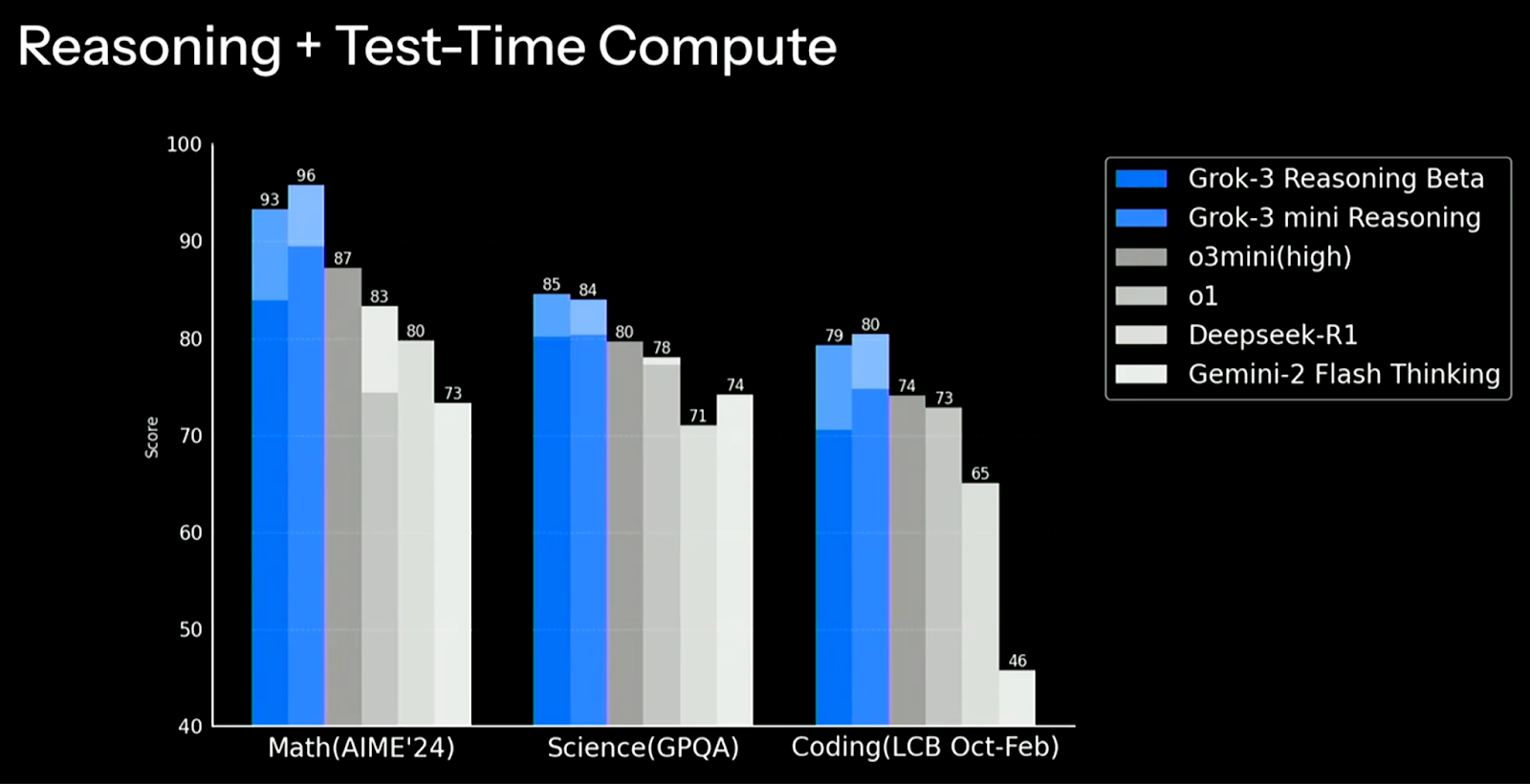
Source: xAI
How are reasoning models different?
If you’ve used ChatGPT, Claude, or Gemini, you’re familiar with how most AI models work: you ask a question, they generate an answer, and that’s it.
Reasoning models like Grok 3 take a different approach. Instead of spitting out an answer immediately, they break down problems step by step, show their intermediate thoughts, and even refine their output before presenting a final response. This makes them especially powerful for tasks like math, coding, and real-world problem-solving.
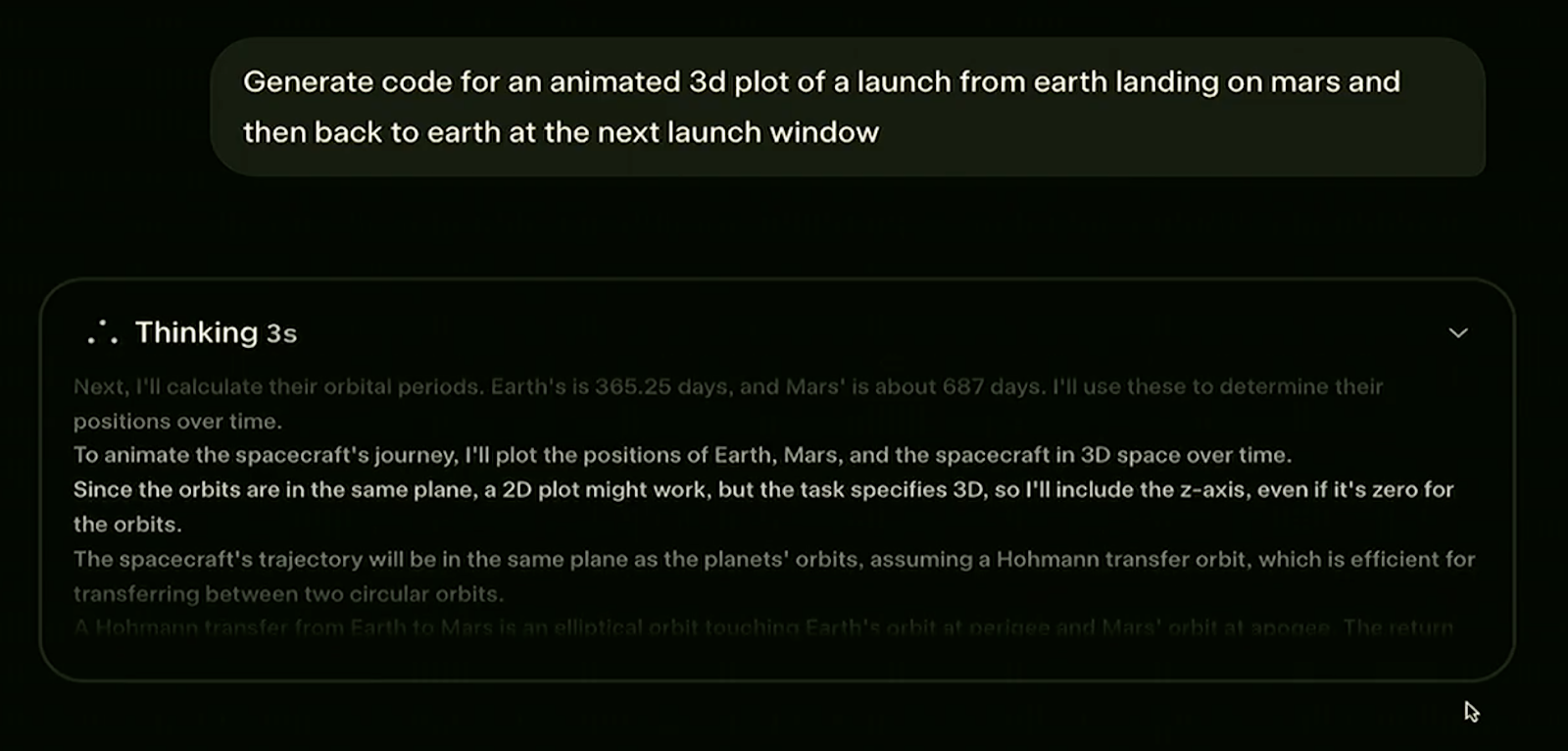
Source: xAI
Grok 3 Mini
Not every task requires the full-scale reasoning of Grok 3. Grok 3 mini is optimized for speed and lower compute usage while still retaining Grok 3’s reasoning capabilities.
Grok 3 mini can be especially useful for developers who want to optimize their spending on token usage while using the API.
We could also switch to Grok 3 Mini for a faster response in the chat interface. Based on the benchmarks, there won’t be many questions it can’t handle.
Grok 3 Think Mode
Think mode is an optional setting that activates Grok 3’s multi-step reasoning process. Instead of jumping straight to an answer, it breaks problems into smaller steps, evaluates different solutions, and refines its response before outputting a final result.

This mode is particularly useful for complex problem-solving, mathematical proofs, coding challenges, and logic-based tasks. It mimics human-like structured thinking, making it ideal for situations where the quality of reasoning matters more than speed.
From what I can tell, xAI is positioning Grok 3 as both a reasoning model and a generalist model. When Think mode is off, it behaves more like GPT-4o or Claude 3.5 Sonnet—fast, conversational, and optimized for general use. But when Think mode is activated, it shifts into reasoning mode, breaking down complex problems step by step.
This hybrid approach becomes even clearer when looking at the benchmarks. xAI didn’t just compare Grok 3 to reasoning models like OpenAI’s O1 or DeepSeek R1—it also tested it against generalist models like GPT-4o, DeepSeek-V3, and Claude 3.5 Sonnet. This suggests they want it to compete in both categories, rather than being limited to just one.
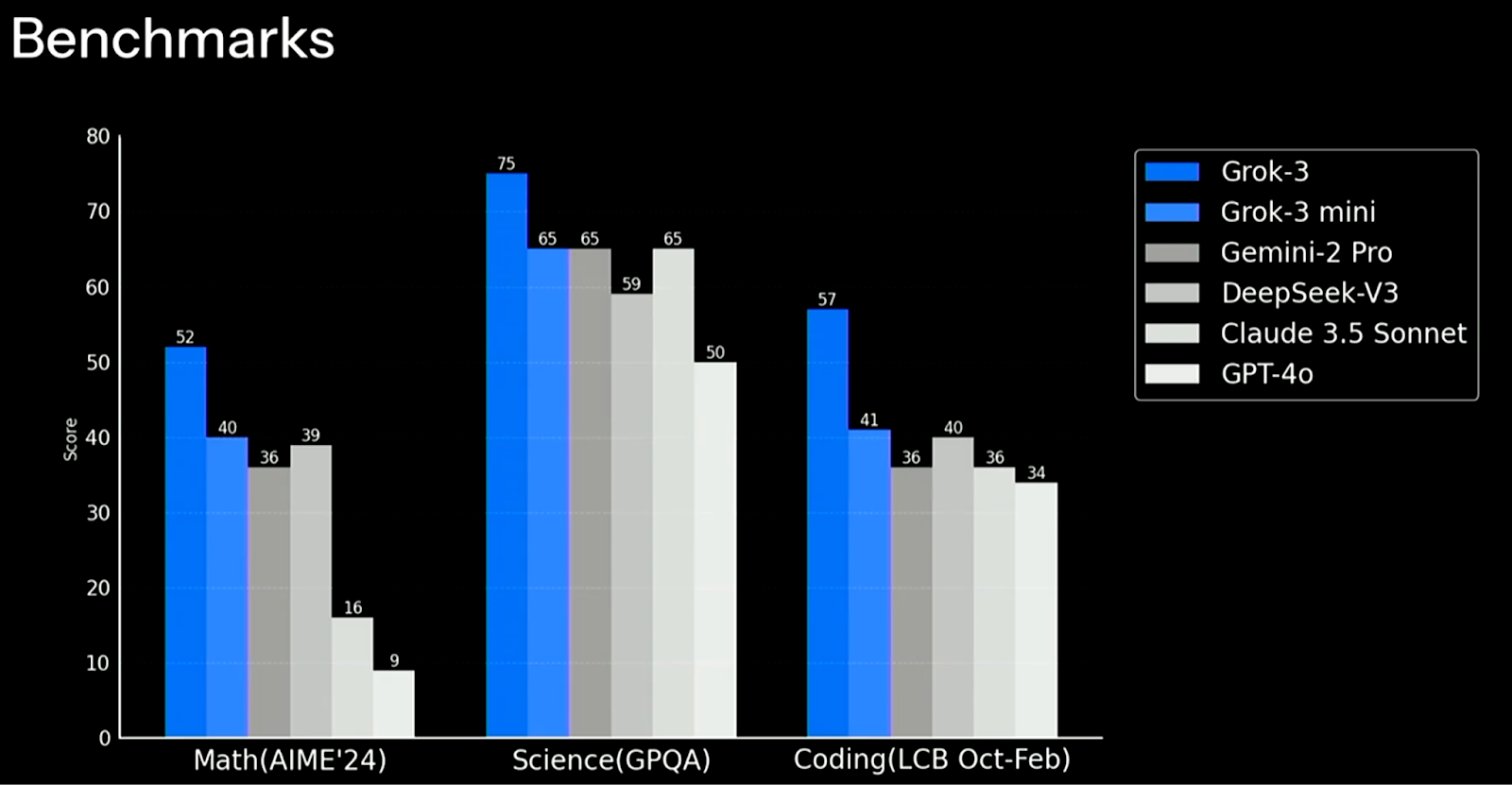
Source: xAI
Grok 3 Big Brain Mode
Big Brain mode is Grok 3’s high-performance setting, allocating extra computational resources to handle demanding tasks.
When enabled, Grok 3 takes longer to process queries but delivers higher accuracy, deeper insights, and more detailed responses. This mode is particularly useful for scientific research, multi-layered AI tasks, and highly complex problem-solving scenarios, where standard inference might not be enough.

Grok 3 DeepSearch
DeepSearch is xAI’s built-in research tool, allowing Grok 3 to browse the web, verify sources, and synthesize real-time information before generating an answer.
Unlike standard AI models that rely on pre-trained data, DeepSearch pulls in fresh information, making it ideal for news, market trends, technical research, and fact-checking. This mode positions Grok 3 as a competitor to Gemini’s Deep Research and OpenAI’s Deep Research.
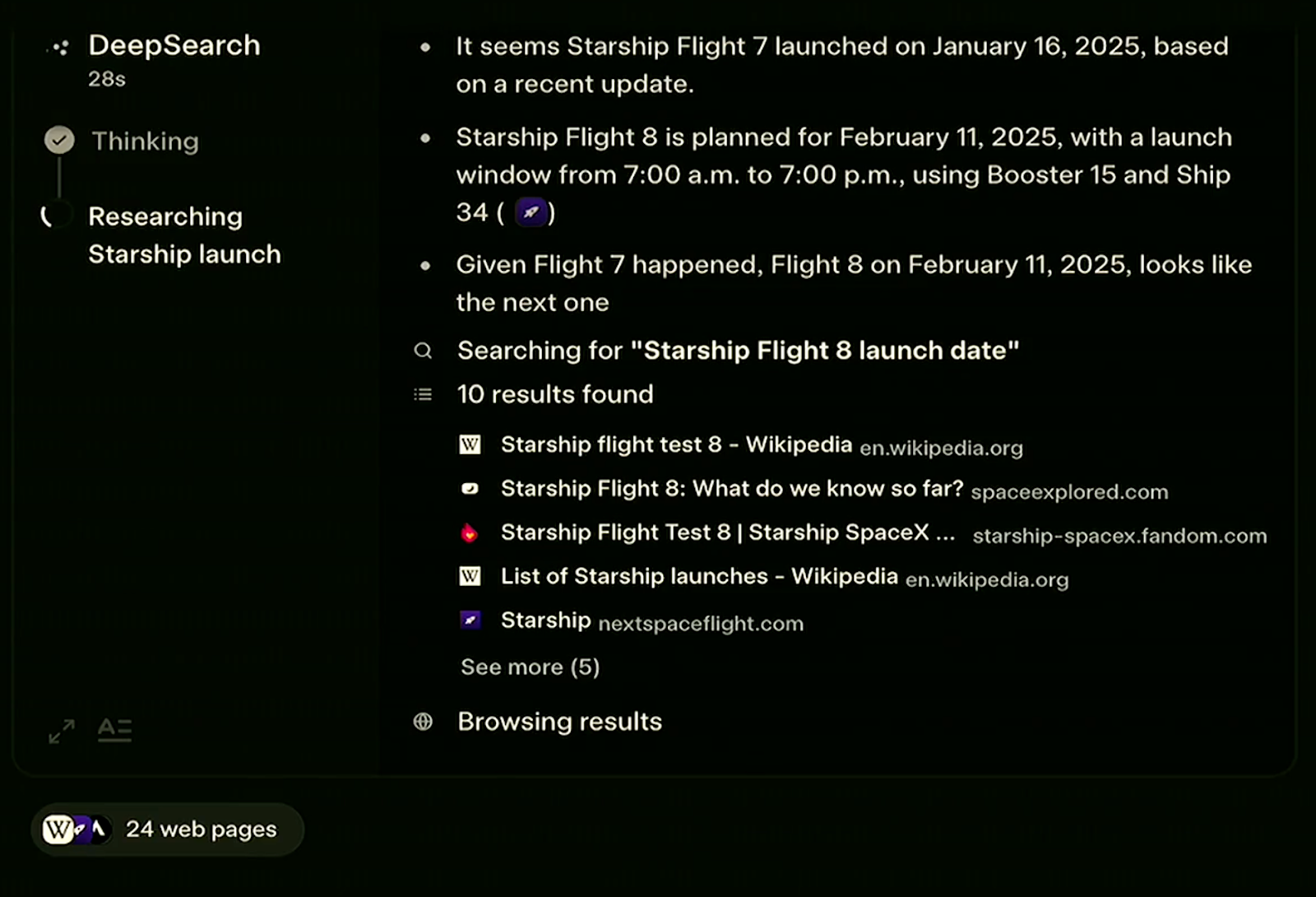
Source: xAI
How Was Grok 3 Developed?
Grok 3 is built on major infrastructure upgrades, new training techniques, and a massive scale-up in compute power. Unlike its predecessors, which were trained on relatively limited hardware, xAI has now constructed one of the largest AI training clusters in the world to support Grok 3’s development.
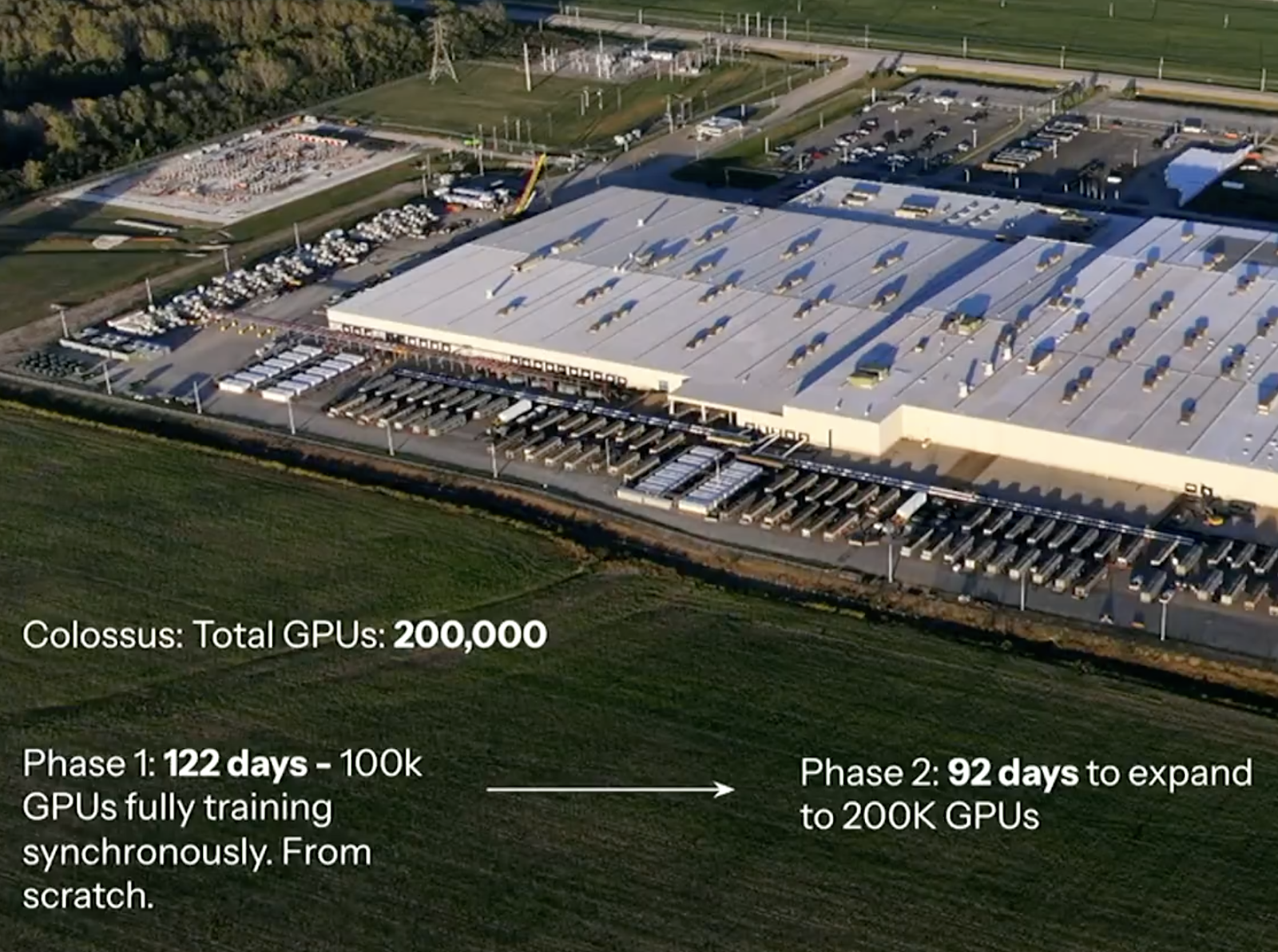
Source: xAI
Colossus: xAI’s custom supercomputer
One of the biggest challenges in training large-scale AI models is compute availability. To get around this, xAI built its own supercomputer cluster called Colossus (you can see the warehouse in the image above).
The first phase, completed in just 122 days, deployed 100,000 H100 GPUs, making it one of the largest AI training clusters in the world.
In the second phase, xAI doubled the compute capacity in another 92 days. This infrastructure allows continuous training, meaning Grok 3 is still improving in real-time as more users interact with it.
From Grok 0 to Grok 3
Grok 1 was released in November 2023, and while it had personality, it was nowhere near the level of GPT-4o or Claude 3.5 Sonnet. Grok 2 followed just a few months later, showing major improvements, but it still lagged behind the top models.
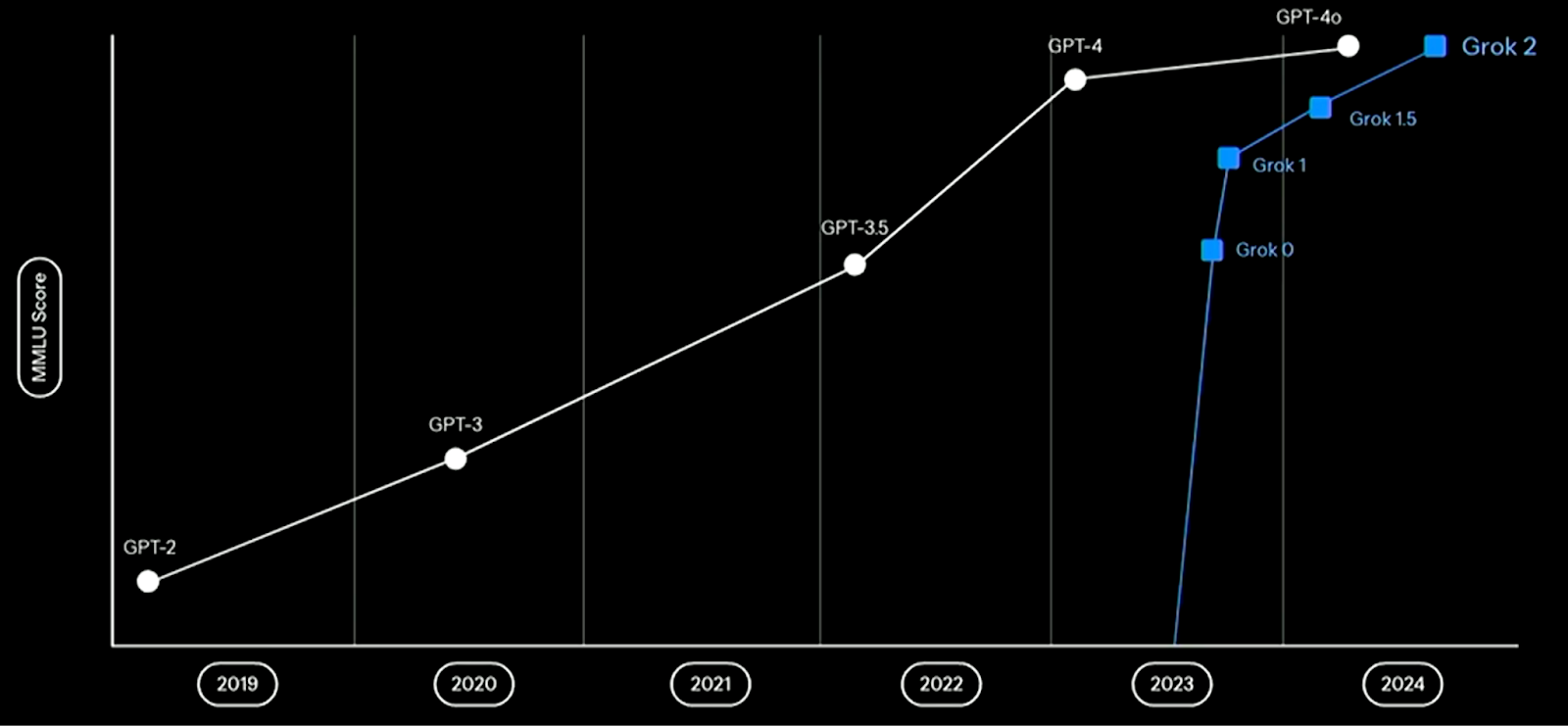
Source: xAI
Grok 3, however, marks a much bigger jump. The team claims Grok 3 is 10–15 times more powerful than Grok 2, thanks to both model improvements and a dramatic increase in training compute.
Grok 3 Benchmarks
xAI claims Grok 3 is one of the most powerful AI models to date, and the benchmarks from its live demo suggest it might actually be competitive with the best. Let’s break down the results across math, science, and coding to see how it stacks up against GPT-4o, Claude 3.5 Sonnet, Gemini-2 Pro, and DeepSeek-V3, as well as other reasoning models like O1 and DeepSeek-R1.
Performance against generalist models
The first set of benchmarks compares Grok 3 and Grok 3 Mini to other general-purpose models.

Source: xAI
Grok 3 leads in all categories by a large margin, but math, science, and coding represent only a fraction of generalist model use cases—people also rely on it for writing, analyzing reports, providing customer support, and more.
It’d be interesting to see how Grok 3 performs on benchmarks like MMLU (broad knowledge across 57 subjects), BBH (complex reasoning and abstract problem-solving), or TruthfulQA (accuracy in answering ambiguous or controversial questions) to get a more complete picture of its real-world capabilities.
Performance against reasoning models
When Grok 3’s reasoning capabilities are fully utilized—meaning Think mode and Big Brain mode are turned on—the model’s performance jumps significantly. This second set of benchmarks compares Grok 3 Reasoning Beta and Grok 3 mini Reasoning against other advanced reasoning models, including O1, DeepSeek-R1, and Gemini-2 Flash Thinking.

Source: xAI
Grok 3’s reasoning abilities push its math performance to 93–96, a massive jump from its generalist mode (52).
Science and coding scores also improve significantly, surpassing o1, DeepSeek-R1, and Gemini-2 Flash Thinking.
Grok 3 mini Reasoning performs on par with the full Grok 3 in reasoning tasks (or even better—I have to admit, the graph is a bit confusing with those color layers), meaning even the smaller variant remains competitive in complex problem-solving.
How to Access Grok 3?
xAI is rolling Grok 3 gradually, with wider availability expected in the coming months. We’ll be able to use Grok 3 in a chat-based interface and via the API.
Chat-based interface
The model is currently integrated into X (formerly Twitter) and available to Premium+ subscribers. Users can chat with it directly within the platform, much like previous Grok versions. You can find the Grok button on the left-side menu:

Beyond X, xAI has launched grok.com, a standalone web interface where users can interact with the model outside the social media platform. Accessing Grok through this website is not yet available in the EU and UK.
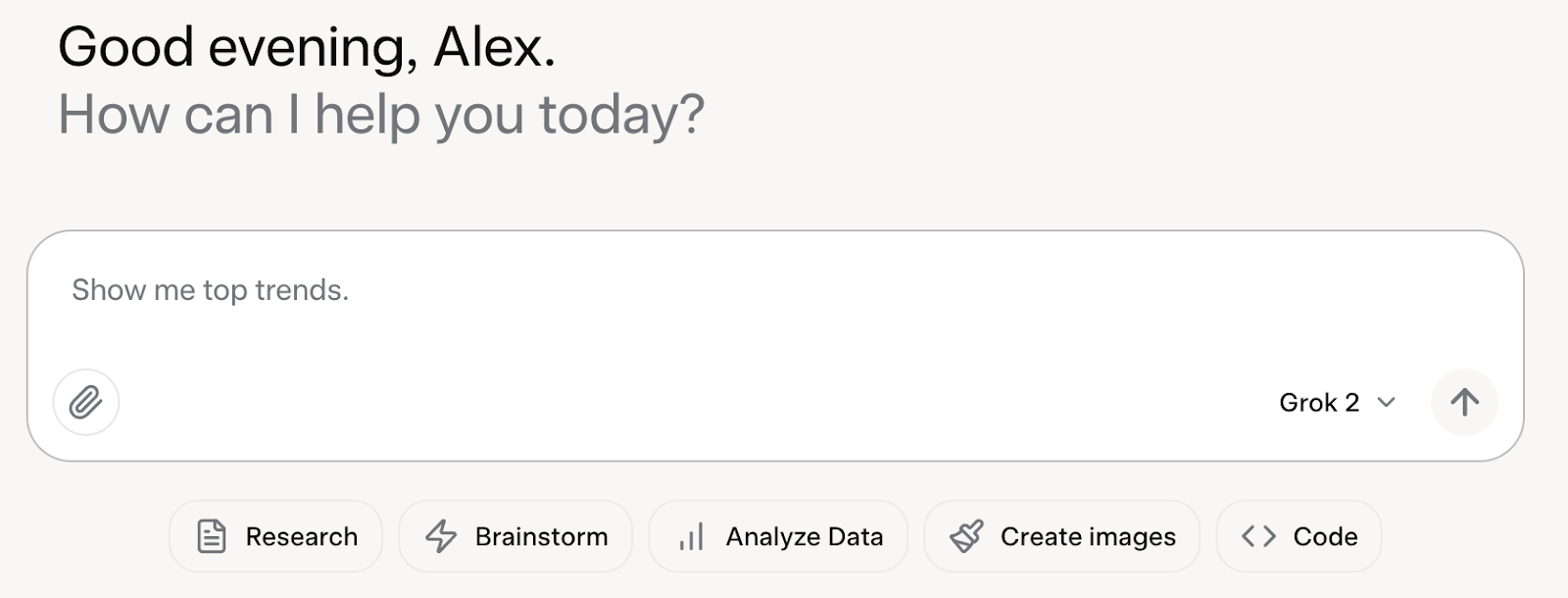
There’s also a dedicated mobile app, but it’s only available on iOS.
Grok 3 API
As of this article’s publication, Grok 3 hasn’t been released through the API yet, but it will likely be available soon. Keep an eye on the models page for the latest updates.
Conclusion
Grok 3 is easily xAI’s most ambitious release yet, but I’m waiting to see how it holds up outside of its own demo benchmarks. Right now, it looks like a solid reasoning model, competing with OpenAI and DeepSeek in multi-step problem-solving.
The hybrid approach—where it can switch between fast, conversational replies and deeper reasoning with Think mode—makes sense on paper. But I’d like to see how well it actually generalizes beyond math, coding, and science, especially in tasks like writing, summarization, and real-world research. You can also check out our guide to the latest model, Grok 4.1.
AI Upskilling for Beginners
FAQs
What future developments are planned for Grok 3?
xAI has announced plans to introduce a synthesized voice feature to Grok 3, enhancing its interactivity. Additionally, there are plans to open-source Grok-2 in the coming months. These developments aim to expand Grok 3’s capabilities and accessibility.
Are there any geographical restrictions for accessing Grok 3?
Currently, access to Grok 3 through grok.com is not available in the European Union and the United Kingdom. Users in these regions may face restrictions and should check for updates regarding availability.
What are the subscription options for accessing Grok 3?
Grok 3 is available through different subscription tiers. On the platform X (formerly Twitter), it is accessible to Premium+ subscribers. Additionally, xAI offers a standalone web interface and a dedicated mobile app with a SuperGrok subscription tier, which provides advanced features. As of now, there is no public API available for Grok 3.
Is Grok 3 capable of handling multimodal inputs?
Yes, Grok 3 supports multimodal capabilities, including image understanding and generation.
I’m an editor and writer covering AI blogs, tutorials, and news, ensuring everything fits a strong content strategy and SEO best practices. I’ve written data science courses on Python, statistics, probability, and data visualization. I’ve also published an award-winning novel and spend my free time on screenwriting and film directing.



